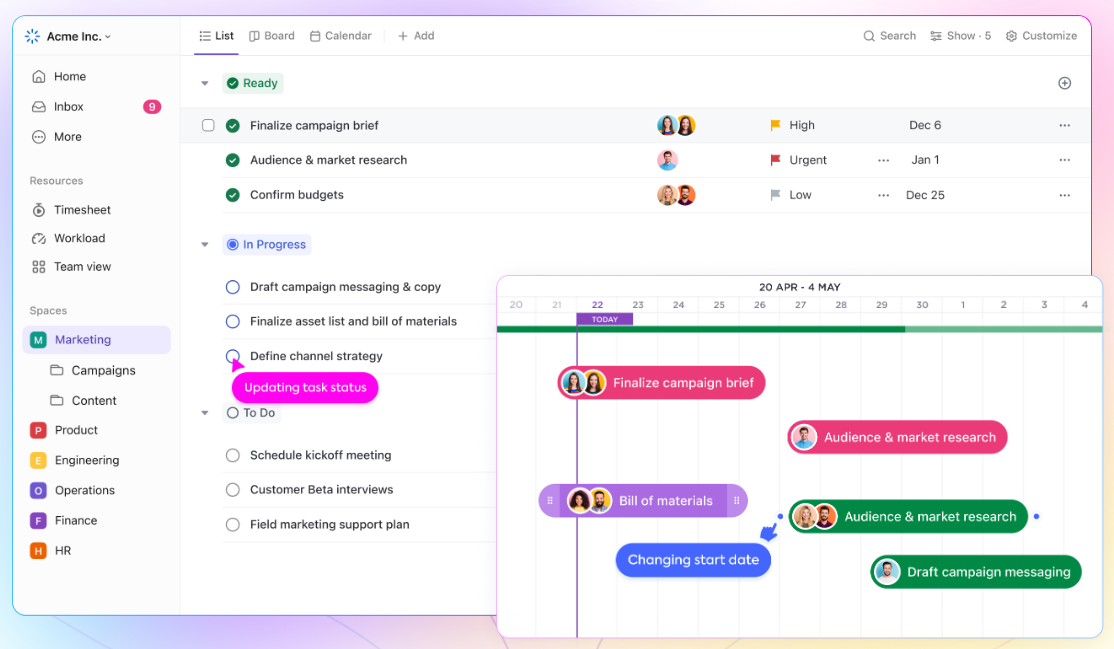How to Prioritize Your Tasks at Work
Effectively prioritizing your tasks at work is essential for maintaining productivity, reducing stress, and achieving your goals. With a clear strategy in place, you can ensure that your most important tasks are completed on time. Here are some practical tips on how to prioritize your tasks at work.
1. Make a Comprehensive To-Do List
Start by writing down all the tasks you need to complete. This helps you get a clear overview of what needs to be done and prevents important tasks from being overlooked. Use digital tools like Todoist or Microsoft To Do for an organized and accessible list.

2. Use the Eisenhower Matrix
The Eisenhower Matrix is a powerful tool for prioritizing tasks. It divides tasks into four categories:
- Urgent and Important: Tasks that need immediate attention.
- Important but Not Urgent: Tasks that are important for long-term success but don’t require immediate action.
- Urgent but Not Important: Tasks that need to be done soon but are not critical to long-term goals.
- Neither Urgent nor Important: Tasks that are often distractions and can be minimized or eliminated.
Focus on completing tasks in the “Urgent and Important” category first, then move on to the “Important but Not Urgent” tasks. Learn more about the Eisenhower matrix
3. Set Clear Goals and Deadlines
Define clear goals for what you need to achieve and set deadlines for each task. This helps create a sense of urgency and provides a timeline for completing tasks. Use project management tools like Asana or Trello to keep track of deadlines and progress.
4. Identify Your Most Productive Times
Recognize when you are most productive during the day and schedule your most important tasks for those times. For many people, this is in the morning when they are fresh and energized. By aligning high-priority tasks with your peak productivity periods, you can work more efficiently.
5. Break Down Large Tasks
Large tasks can be overwhelming and lead to procrastination. Break them down into smaller, manageable subtasks. This makes it easier to start and track your progress. Tools like ClickUp can help you break down and organize complex tasks into smaller steps.
6. Learn to Say No
It’s important to recognize your limits and not overcommit. Politely decline additional tasks or delegate them when you are already at capacity. This allows you to focus on your current priorities without becoming overwhelmed.
7. Use the ABCDE Method
The ABCDE method, popularized by Brian Tracy, involves categorizing tasks based on their level of importance:
- A: Must do – very important tasks with serious consequences if not done.
- B: Should do – important tasks but not as critical as A tasks.
- C: Nice to do – tasks that would be good to do but have no significant consequences.
- D: Delegate – tasks that can be assigned to someone else.
- E: Eliminate – tasks that are not necessary and can be removed.
Tackle your A tasks first, then move on to B and C tasks.
8. Limit Multitasking
Multitasking can reduce efficiency and lead to errors. Focus on one task at a time, completing it before moving on to the next. This helps maintain high quality in your work and ensures that tasks are fully completed.
9. Review and Adjust Regularly
Take time at the end of each day or week to review your task list and adjust priorities as needed. This helps you stay on track and adapt to any changes in your workload or objectives. Regular reflection ensures that you are always working on the most important tasks.
10. Utilize Technology
Take advantage of the best automation tools to organize your day to help prioritize and manage tasks.
By implementing these strategies, you can effectively prioritize your tasks, enhance your productivity, and achieve your work goals more efficiently. Remember, the key to successful task management is not just about working harder, but working smarter.



